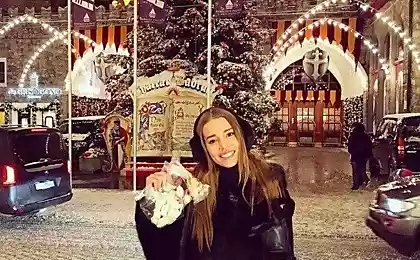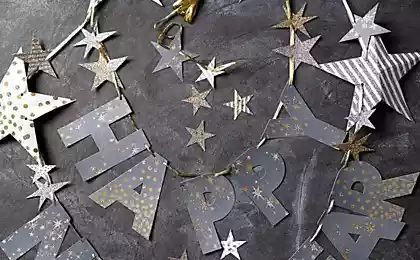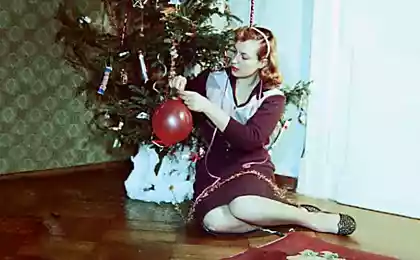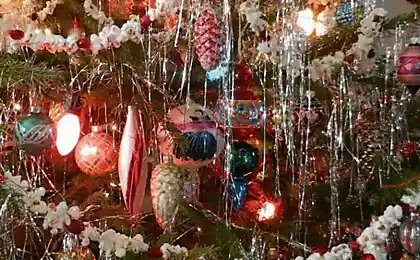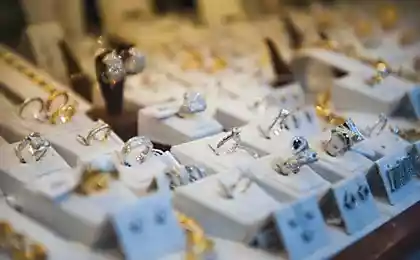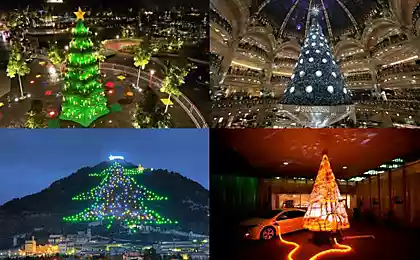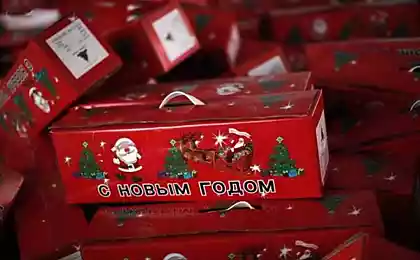2018
How to decorate the Christmas tree then and now


The 1990s brought a new tree to Russia. Radical political and economic changes, cultural and ideological transformations that took place in the country at this time, could not but affect the established "Christmas" ideology. To replace the Soviet Christmas tree, “frozen” and “ossified” together with the entire Soviet society in its festive “monotonous” splendor of the 1970s-1980s, came the post-Soviet Christmas tree – bright, bold, destroying the existing canons and stereotypes.


Toys of the 1930s
The loss of interest in such a toy was largely due to the fact that in the sphere of consumption it went through the same fairly typical stages that characterized the regimes and levels of people’s attitude to things in the USSR and then in post-Soviet Russia. Initially and, incidentally, for quite a long time - since its appearance in the second half of the 1930s and for more than a quarter of a century - the Christmas tree toy was scarce and therefore especially valuable and carefully stored. Toys were treated carefully: families accumulated whole collections of Christmas decorations, passed on to subsequent generations.


Christmas decorations of different periods of the USSR
The transition to machine, industrial production of Christmas tree toys in the mid-1960s led to the emergence of many standardized products. Such a toy was no longer a pity to break or break and easy to replace. In Soviet society, there were mass stereotypes of the consumption of Christmas tree decorations, which, one way or another, were satisfied with the Soviet economy. Although this economy was ascetic and practically isolated from the rest of the world, even if these toys were sometimes poor and even miserable, but they had one great advantage - they were cheap, and everyone could afford them.


Pre-holiday trading in the “Children’s World”
By the mid-1980s, consumer expectations of Soviet citizens had changed significantly. To a large extent, they were focused on imported goods, with which good and environmentally friendly, but not very elegant and not always beautiful domestic samples could not compete. The goods of the world Christmas market were now well known not only thanks to Western glossy magazines and foreign newsreels that penetrated the USSR.


Christmas Deer from 1994 Burda Moden Magazine
“On occasion” imported Christmas tree toys could be purchased in Soviet stores (defending a long queue or “for good”), bought at a flea market or brought from a foreign trip. Especially familiar with the imported Christmas tree toy were the upper strata of Soviet society. Putting a tree decorated with foreign toys at home was considered especially prestigious.


Vintage Christmas decorations from Britain
On the shelves until the early 1990s lay still only toys of domestic production. In the conditions of a deficit economy, their choice was increasingly narrowed, and the quality deteriorated: I still remember the glass bump bought in December 1991 - a huge, palm-sized, clumsy and coarsely painted, terribly heavy, so that not every spruce branch could withstand it.
Various Christmas balls
In the 1990s, with the opening of trade borders, the Russian market was flooded with massive imported, mainly Chinese Christmas tree products - beautiful, cheap, practical (substituted for breaking glass came synthetics and plastic), sometimes far from safe, but diverse. <...> A wonderful but rare exception among this Chinese abundance were handmade Christmas toys made by Russian glassmakers - glass balls and peaks with multi-colored brush smear painting, with decorative decoration of various wooden materials; However, the production of Christmas decorations in that difficult time for the country steadily decreased. According to the famous collector of Soviet Christmas toys, American Kim Balashak, the first 15 post-Soviet years could go down in the history of Russian Christmas toys as the reign of faceless monotonous balls and icicles, aged in strict Western aesthetics and produced by hardworking Chinese.
Christmas tree in European monochrome style
The “invasion” of the imported toy was accompanied by a change in the general style of Christmas decoration, which, in essence, was determined by this toy. In the Christmas tree fashion there was a sharp jump from a cozy, homely, largely “children’s” Christmas tree to a pretentious designer Christmas tree for adults, on which bright diversity and color no longer had a place. Unconditional leadership was captured by the Christmas tree, decorated in the “European”, monochrome style. It was decorated with “tone in tone” with the obligatory presence of “classic” silver or golden color and “classic” Christmas decorations – balls, bows, shimmering garlands. Such a Christmas tree was dominated by restraint and conciseness, which nevertheless gave rise to a feeling of stylish luxury. Also popular was the style of “minimalism”, when only a few bright balls hung on the tree. The fashion for Christmas trees with colored artificial needles - blue, silver, yellow, red, orange and even black - also required a change in the entire style of their decoration.
It is obvious that the former Soviet Christmas toy did not fit into this new Christmas tree style, not only in its content, but also in its appearance.
However, over time, the minimalism and stylistic monochromeness of the New Year tree, found at every step, especially when decorating public Christmas trees - in the open space, in restaurants, hotels, offices and hypermarkets - became a little annoying. Much more unusual looked a tree decorated in retro style, whether it was Victorian garlands made of silk bows or Soviet Christmas decorations of the 1950s. And if recently such a Christmas tree was mainly the property of aesthetes or representatives of the older generation, who wanted to please their grandchildren and great-grandchildren with unusual decorations, then gradually such decoration of the Christmas tree increasingly began to enter into festive life.
